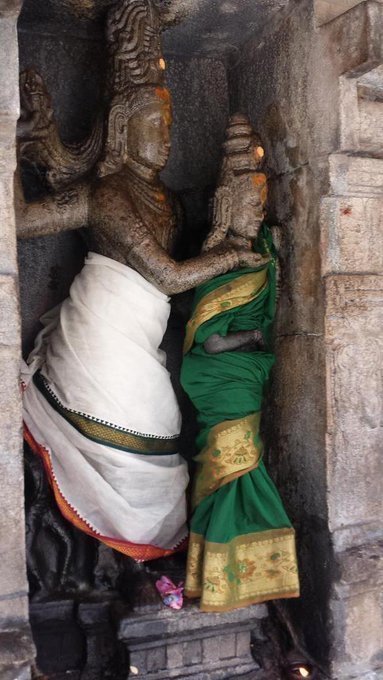https://t.co/UCvUCT9rru
The stunning announcement of >$6B in philanthropic donations in one year by @mackenziescott deserves wider
https://t.co/UCvUCT9rru
Important first to put the $6B total in context. Total grantmaking in 2019 by @darrenwalker at the @FordFoundation was ~$350M. Total at @Hewlett_Found was ~$450M.
So @mackenziescott is ~15x some of the largest and most discussed foundations.
No address. No website. No known staff. We don't even know much about the entities she's using -- DAFs, LLCs, private foundation?
https://t.co/y4kLry4XOT
*Proves it's not that difficult to give away a billion dollars.
*No strings attached giving - all general operating support over multiple years
*No reporting requirements, AFAIK

Her preferences, and hers alone, determine a flow of $6b into American civil society.
Despite the astonishing ~6B in giving, she's almost certainly far wealthier at the end of 2020 than she was at the start. Amazon stock's value has soared.

Contrary to popular opinion, philanthropy is not the exercise of liberty to give away your own money. It's a tax-subsidized exercise of liberty.
Here's the latest: https://t.co/tQ0aYrq59z
"Doctors say they've received calls from their well-off clients asking if they can have early access to the extremely limited supply of vaccine doses in exchange for a financial contribution to a hospital or charity."
— Anand Giridharadas (@AnandWrites) December 21, 2020
How noble, these donors. https://t.co/DLnjm8UY56
People to follow: @Philanthropy @InsidePhilanthr @AnandWrites @nkulish @SSIReview @HistPhil @Philliteracy @p2173
More from Society
You May Also Like
First thread of the year because I have time during MCO. As requested, a thread on the gods and spirits of Malay folk religion. Some are indigenous, some are of Indian origin, some have Islamic
Before I begin, it might be worth explaining the Malay conception of the spirit world. At its deepest level, Malay religious belief is animist. All living beings and even certain objects are said to have a soul. Natural phenomena are either controlled by or personified as spirits
Although these beings had to be respected, not all of them were powerful enough to be considered gods. Offerings would be made to the spirits that had greater influence on human life. Spells and incantations would invoke their
Two known examples of such elemental spirits that had god-like status are Raja Angin (king of the wind) and Mambang Tali Arus (spirit of river currents). There were undoubtedly many more which have been lost to time
Contact with ancient India brought the influence of Hinduism and Buddhism to SEA. What we now call Hinduism similarly developed in India out of native animism and the more formal Vedic tradition. This can be seen in the multitude of sacred animals and location-specific Hindu gods
i wonder if you can make a thread bout witchcraft in malaysia.. or list of our own local gods/deites..
— r a y a \U0001f319 (@lcvelylilith) February 20, 2020
Before I begin, it might be worth explaining the Malay conception of the spirit world. At its deepest level, Malay religious belief is animist. All living beings and even certain objects are said to have a soul. Natural phenomena are either controlled by or personified as spirits
Although these beings had to be respected, not all of them were powerful enough to be considered gods. Offerings would be made to the spirits that had greater influence on human life. Spells and incantations would invoke their
Animist ceremonies of a religious or magical nature were normally held for the purpose of divination or making a request. This would either be done at a keramat or at a shrine similar to the Thai spirit houses or Chinese roadside shrines pic.twitter.com/I1hliyi0x3
— \u2745\u1710\u170b\u1713\u170e (@uglyluhan) June 16, 2019
Two known examples of such elemental spirits that had god-like status are Raja Angin (king of the wind) and Mambang Tali Arus (spirit of river currents). There were undoubtedly many more which have been lost to time
Contact with ancient India brought the influence of Hinduism and Buddhism to SEA. What we now call Hinduism similarly developed in India out of native animism and the more formal Vedic tradition. This can be seen in the multitude of sacred animals and location-specific Hindu gods






















